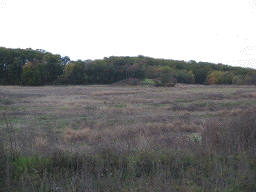Examples: SciVi Field Trips @EstuaryLive | Habitat journal process Use a digital camera and/or a digital camcorder to make a photo science journal regarding a fields, meadow or fencerow habitat.
|
Important Advice for Videographers.
Discover what you need to know to make a digital media project starts page 10
Plan ahead. Use a worksheet to organize your work. pdf version | doc version
Multimedia Project Planning WorksheetWrite a script.
Take/find the photos or shoot the video.
Adjust the script for unplanned, opportune additions.
Always be safe. Contrary to what you may see on TV, no cool or humorous shot is worth getting injured.
Here are the guidelines for the project
1. Use Microsoft Photo Story (free) or Apple's iMovie to create the show.
Read the tutorial: Tech learning's PhotoStory Tutorial or Photo Story tutorials by David Jakes.
Watch the iMovie tutorial | iMovie 08 tutorial | Create an iMovie Project | Support
iMovie tips and tutorials
Using photos in iMovie tutorial
Begin with an idea and a storyboard | iMovie storyboard form | Storyboard 2
Movie rubrics - Rubric 2 | Rubric 3 | Video Project Rubric | MYO Rubric
2. Your project should begin with a title and an introduction.
It must contain at least 10 photos or images. The project should be no longer than 10 minutes.
3. If you use someone else's photos or images, an attribution slide must be included at the end of your project. Other people's photos must be licensed under Creative Commons or be public domain materials.
4. Take your photos. Read Tell the story in pictures.
- If you plan to include people's faces, get their permission, first. Respecting each person's privacy is a vital human right. (Notice how the kids at Richie's school who made life 'round here projects, avoided clear shots of people's faces.)
- What is your school's policy about taking photos of students in school? Find out.
- Generally, photos of people taken out of school in public places may not require special permission.
- It is always best to learn the laws and rules in your area or state BEFORE you take photos.
Always take a few more photos than you anticipate needing. It is much easier to delete an extra photo, than to need one at the last minute.
Here are great tips about taking photos.
5. Narrate the story.
6. Use the same transition throughout your whole project. I know it is hard to choose. But having several kinds of transitions can make your project look messy.
7. Music is not required. Only instrumental music may be used. Music is included in Photo Story. Other music must be licensed under Creative Commons or public domain. You must prove this by showing the download link or the cd.
What's with all these rules? You may want to publish your creation on the Internet or show it outside of your classroom. If you do that, it must abide by copyright laws. It is best to build your project within those rules from the start. Additionally, some people have religious or personal objections to having their picture taken. We should all respect that. Period.
8. Proof read your digital project. It is funny how speling errors and typeos sneak in to the bets worck.
Done Already? Excellent!
You get an additional mission. Make a photo essay of the class doing the project. Or make a how to using photos, text, sound and video for your classmates. Demonstrate the steps for making a digital photo slide show project. Include one totally terrific tip.
Resources:
The Center for Digital Storytelling Educational rap music - the other three r's WOW! |
The Fundamentals of Digital Storytelling Pics4Learning - copyright friendly for use in education projects LearningElectric - on demand tutorials that build skills Copyright friendly images - Wikimedia Commons |
![]() Fields, Meadows, and Fencerows : Habitat / Mammals / Birds / Insect - Butterflies / Trees & Plants - Milkweed & Monarchs
Fields, Meadows, and Fencerows : Habitat / Mammals / Birds / Insect - Butterflies / Trees & Plants - Milkweed & Monarchs
Populations Status in your state | Fields, Meadows & fencerows photos | Conclusions | Make an A to Z book
Other Digital Learning Projects:
| Winter Song Story Project | Alphabet book about your state or community project |
| Best Treat of All - bird book online | Sell your town - Why should someone move to your town? |
| GIS Map & Inventory the Trees in your community | Look into your Community's Past project - problem based learning |
| Bluebirds Project | Student Handbook Presentation |
| Milkweed and Monarch Butterfly Mania | Web site Evaluation |
| Citizen Science Projects | Fields, Meadows and Fencerows eGame - how to |
Problem Based Learning / Civics / Internet Hunts / Nature / Computers / Pennsylvania Projects / Puzzles & Projects / Mrs O's House
developed by Cynthia J. O'Hora Posted 7/2008, Updated 3/2011, 11.2013
Released to public domain in honor of Steve Jobs and Steve Wozniak who have always challenged conventional thinking.
In doing that, they have changed our lives for the better.
The goal of this web project is to inform people through research while employing higher order thinking skills. This study unit encourages the use of free Internet information resources. Activities develop writing, information literacy, technology and mathematics skills. The resources posted here may be freely adapted or modified to meet each student's unique skills or interests.
Aligned with Pennsylvania Academic Standards: Reading, Writing, Science & Technology, Ecology & Environment, Mathematics, Geography, Career. Aligned with National Academic Standards: Technology, Science, Geography.
